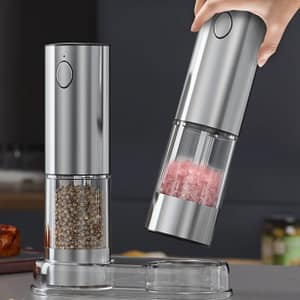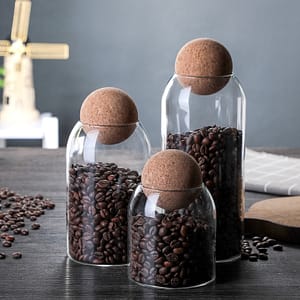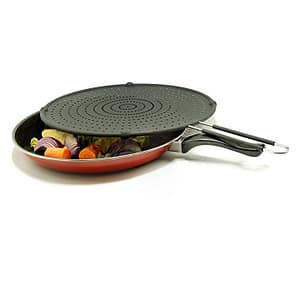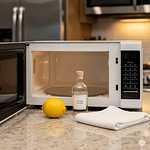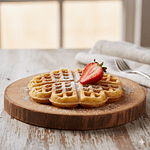
Blog Details

Why Your Homemade Bread Isn’t Rising (and the Fix)
There’s nothing quite like the aroma of freshly baked bread filling your home. But for many aspiring bakers, the dream of a tall, airy loaf often crumbles into the reality of a dense, flat disappointment.
You follow the recipe to a T, knead with care, and wait patiently… only to find your dough stubbornly refusing to rise. It’s one of the most frustrating moments in home baking.
Often, the problem isn’t your technique, but a crucial element you might be overlooking – or treating incorrectly. Let’s uncover the overlooked ingredient that holds the key to a perfect rise and give you the simple fixes you need.
The Real Culprit: Your Yeast (and How You Treat It)
The vast majority of bread-rising issues stem from one tiny, living organism: yeast. Yeast is what produces the carbon dioxide bubbles that make your dough light and airy. If your yeast isn’t happy or healthy, your bread simply won’t rise.
1. The Goldilocks Temperature: Water is Key!
This is perhaps the most common mistake. Yeast is a delicate living thing, and its environment matters, especially the temperature of the liquid you mix it with.
- Too Hot: Water that’s too hot will kill the yeast, rendering it inactive. Think of it like a hot bath that’s actually scalding.
- Too Cold: Water that’s too cold won’t activate the yeast efficiently, leading to a very slow or non-existent rise. It’s like trying to wake someone up with a freezing shower – it just might not work.
Correct Practice: Aim for lukewarm water – usually between 105∘F and 115∘F (40∘C and 46∘C) for active dry yeast. If you don’t have a thermometer, it should feel comfortably warm to the touch, like baby bathwater.
2. Is Your Yeast Alive? The Proof is in the Proofing!
Even if your water temperature is perfect, old or improperly stored yeast can lose its potency. Yeast has a shelf life, and exposure to air and moisture can shorten it.
Correct Practice: Before adding yeast to your flour, “proof” it (test its activity).
- Combine the yeast with a pinch of sugar and the lukewarm water (or a small portion of it from your recipe).
- Let it sit for 5-10 minutes.
- If your yeast is alive and active, the mixture will become foamy and bubbly on top, indicating that the yeast is “eating” the sugar and producing gas. If nothing happens, your yeast is dead, and you’ll need a new packet.
3. The Salty Scrutiny
Salt is essential for flavor and structure in bread, but it’s a known yeast inhibitor. Adding salt directly on top of yeast can prevent it from activating properly.
Correct Practice: Always add salt after you’ve activated your yeast and mixed it with flour, keeping them separate initially. Or, ensure all dry ingredients (flour, salt) are well-mixed before adding the wet ingredients with the yeast.
Other Factors Affecting Your Rise
While yeast is often the primary suspect, a few other elements can contribute to a flat loaf:
- Cold Proofing Environment: Yeast works best in a warm, draft-free place. If your kitchen is cold, your dough will rise very slowly, if at all. Try placing it in a slightly warmed, turned-off oven or near a sunny window.
- Improper Flour Measurement: Too much flour can make your dough stiff and dense, preventing proper expansion. Using a KitchenWhizdom digital kitchen scale for precise measurements of flour and other ingredients is the most accurate way to bake consistent bread, preventing issues like over-flouring.
- Not Enough Kneading: Kneading develops gluten, which creates the elastic network that traps the yeast’s gases, allowing the bread to rise. Without enough kneading, your bread can’t hold its shape or rise properly.
The Fix: How to Guarantee a Great Rise Every Time
- Check Your Yeast: Always proof your yeast first, especially if it’s been sitting in the pantry for a while.
- Mind the Temperature: Use lukewarm water (105∘F−115∘F) to activate your yeast.
- Separate Salt and Yeast: Add salt only after yeast is activated or mixed well with flour.
- Warm It Up: Provide a warm, draft-free environment for your dough to rise.
- Measure Precisely: Use a scale for ingredients, especially flour, for consistent results.
- Knead Thoroughly: Develop that gluten!
By paying attention to these crucial details, you’ll transform your baking experience and consistently achieve that perfect, fluffy, golden-brown loaf you’ve been dreaming of. Happy baking!
FAQ Section:
How long should my dough take to rise?
This varies greatly depending on the recipe, yeast type, and ambient temperature. Generally, a first rise takes 1-2 hours, and a second rise might be shorter. Look for the dough to double in size, not just a specific time.
Can I use active dry yeast and instant yeast interchangeably?
Generally, yes, with slight adjustments. Instant yeast can be mixed directly with dry ingredients, as it activates faster. Active dry yeast typically requires proofing in warm water first. If a recipe calls for one, and you use the other, you might need to adjust the initial steps slightly.
My dough rose beautifully, but then collapsed in the oven. Why?
This often means your dough was over-proofed. The yeast produced too much gas, and the gluten structure couldn’t hold it, causing it to collapse. Ensure your proofing environment isn’t too warm, and bake as soon as the dough is adequately risen.
Can I save expired yeast?
Unfortunately, no. Once yeast loses its viability, it won’t activate. It’s always best to invest in fresh yeast for reliable results. For precise measuring for all your ingredients, check out the KitchenWhizdom digital scale
What’s the ideal humidity for bread rising?
A humid environment can help prevent the dough from drying out and forming a skin, which can inhibit rising. Placing a bowl of hot water in your proofing area (like a turned-off oven) can help create a steamy environment.
Dont forget to check out our newly launched tool : Recipe Cost Calculator
Our Products
-
Unique Book Coffee Cup – Stack of Books Design
₹1,681.00 – ₹1,695.00Price range: ₹1,681.00 through ₹1,695.00 Select options This product has multiple variants. The options may be chosen on the product page -
Salt & Pepper Electric Grinder – Rechargeable
₹2,435.00 Select options This product has multiple variants. The options may be chosen on the product page -
Glass Storage Jar – Cork Lid & Minimalist Design
₹2,563.00 Select options This product has multiple variants. The options may be chosen on the product page -
Food grade Silicone Splash Screen – Mess-Free Cooking
₹2,158.00 Select options This product has multiple variants. The options may be chosen on the product page -
Stainless Steel Corn Cob Holders – Mess-Free
₹1,086.00 Select options This product has multiple variants. The options may be chosen on the product page -
Silicone Donut Mold – Makes 6 Non-Stick Donuts
₹833.00 Select options This product has multiple variants. The options may be chosen on the product page
Products
-
Unique Book Coffee Cup – Stack of Books Design
₹1,681.00 – ₹1,695.00Price range: ₹1,681.00 through ₹1,695.00 Select options This product has multiple variants. The options may be chosen on the product page -
Salt & Pepper Electric Grinder – Rechargeable
₹2,435.00 Select options This product has multiple variants. The options may be chosen on the product page -
Glass Storage Jar – Cork Lid & Minimalist Design
₹2,563.00 Select options This product has multiple variants. The options may be chosen on the product page -
Food grade Silicone Splash Screen – Mess-Free Cooking
₹2,158.00 Select options This product has multiple variants. The options may be chosen on the product page




